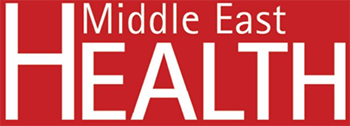At the recent Radiological Society of North America (RSNA) conference in Chicago, Siemens Healthineers introduced two new photon-counting CT scanners, extending the accessibility of this advanced imaging technology. Middle East Health was invited to attend the launch.

Siemens Healthineers has announced a significant expansion of its photon-counting computed tomography (CT) portfolio with the introduction of two new scanners in the new Naeotom Alpha class. The expansion includes the dual-source Naeotom Alpha.Pro and the world’s first single-source photon-counting CT scanner, Naeotom Alpha.Prime, building upon the success of their pioneering Naeotom Alpha system launched in 2021.
The new scanner class represents a fundamental shift in CT technology, utilising cadmium telluride (CdTe) detectors that directly convert X-ray photons into electrical signals. Unlike conventional CT detectors that use a two-stage process converting X-rays to light and then to electrical signals, this direct conversion enables significantly higher spatial resolution and improved contrast-to-noise ratios while also reducing radiation exposure.
“With the launch of the Naeotom Alpha class, we deliver on our promise to make the powerful photon-counting technology accessible to more clinicians and patients,” said Philipp Fischer, head of Computed Tomography at Siemens Healthineers.
Technical specifications and capabilities
The portfolio comprises three distinct models. The high-end dual-source Naeotom Alpha.Peak achieves scan speeds of 737 mm/ sec, while the Naeotom Alpha.Pro combines photon-counting precision with dual-source technology for scan speeds up to 491 mm/ sec. The new single-source Alpha.Prime makes the technology accessible to a broader range of healthcare facilities. All systems feature Quantum HD resolution, delivering unprecedented anatomical details at a slice thickness of just 0.2 mm without increasing radiation dose.
Naeotom Alpha.Prime
In a significant move toward democratizing advanced medical imaging technology, the new NAEOTOM Alpha Prime CT system has been unveiled as an entry-level photon-counting CT scanner. This single-source system represents a strategic approach to making cutting-edge photon-counting technology accessible to a broader range of healthcare facilities, from private practices to major hospitals.
The Alpha Prime maintains the core advantages of photon-counting technology while being optimized for routine clinical operations. It delivers high spectral sensitivity and spatial resolution, though at slightly lower specifications than its dual-source siblings in the Alpha class lineup. Notable benefits include a substantial 35% reduction in radiation dose compared to conventional CT systems, alongside a 25% decrease in contrast agent requirements – both significant advantages for patient safety and comfort.
Designed with versatility in mind, the system is particularly well-suited for high-throughput environments and routine imaging scenarios. Its capabilities span general oncology, standard scanning procedures, and a comprehensive range of clinical applications, making it an attractive option for facilities looking to upgrade their imaging capabilities without the complexity of dual-source systems.
The system’s market introduction is pending regulatory approvals, with FDA clearance and CE marking expected in early 2024. Initial shipments to customers are anticipated to begin following these regulatory milestones, marking a significant step in the transition toward photon-counting technology becoming the new standard in computed tomography. This development aligns with the broader industry trend of making advanced medical imaging more accessible while maintaining high diagnostic standards.
Clinical applications and workflow optimisation
The technology demonstrates particular promise in cardiac imaging, where the improved temporal and spatial resolution can enhance visualisation of coronary arteries and cardiac structures. The systems incorporate artificial intelligence-driven automation through myExam Companion, which streamlines workflow from patient preparation through image reconstruction and post-processing.
Research and development journey
Development of the photon-counting technology began in 2001, with Siemens Healthineers working alongside research and industry partners to perfect the CdTe detector material. Following extensive prototype testing since 2014, the technology has demonstrated significant clinical benefits, including up to 40 percent reduction in radiation and contrast medium doses.
Clinical validation and impact
More than one million patients have been scanned worldwide using the technology. Prof. Pál Maurovich-Horvat, chair of radiology at Semmelweis University Hospital in Budapest, noted: “With our Naeotom Alpha, we can confidently rule out obstructive coronary artery disease in a greater number of heart patients, particularly those with highly calcified coronaries, eliminating the need for invasive diagnostic procedures in the cath lab.”
Manufacturing investment
To support the expansion of this technology, Siemens Healthineers is investing €80 million in their photon-counting detector production facility in Forchheim, Germany. This investment reflects the company’s commitment to scaling up availability of photon-counting CT technology across different healthcare settings.
Future developments
The systems are currently pending 510(k) clearance and CE mark approval, with expected authorisation in early 2024. As Prof. Gabriel Krestin from Erasmus Medical Center, Rotterdam, stated: “In the future, every CT will be a photon-counting CT,” highlighting the technology’s potential to become the new standard in diagnostic imaging.




